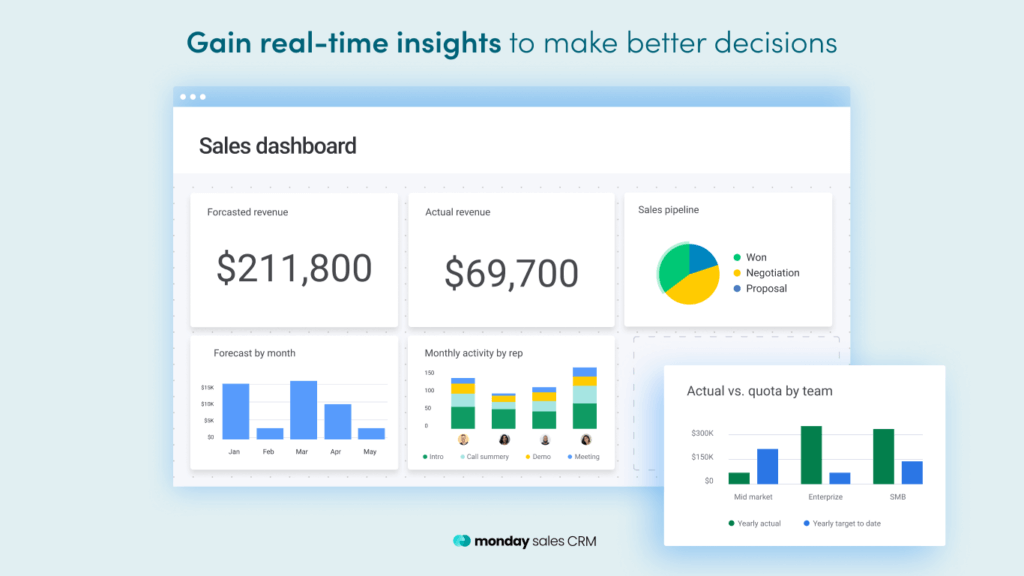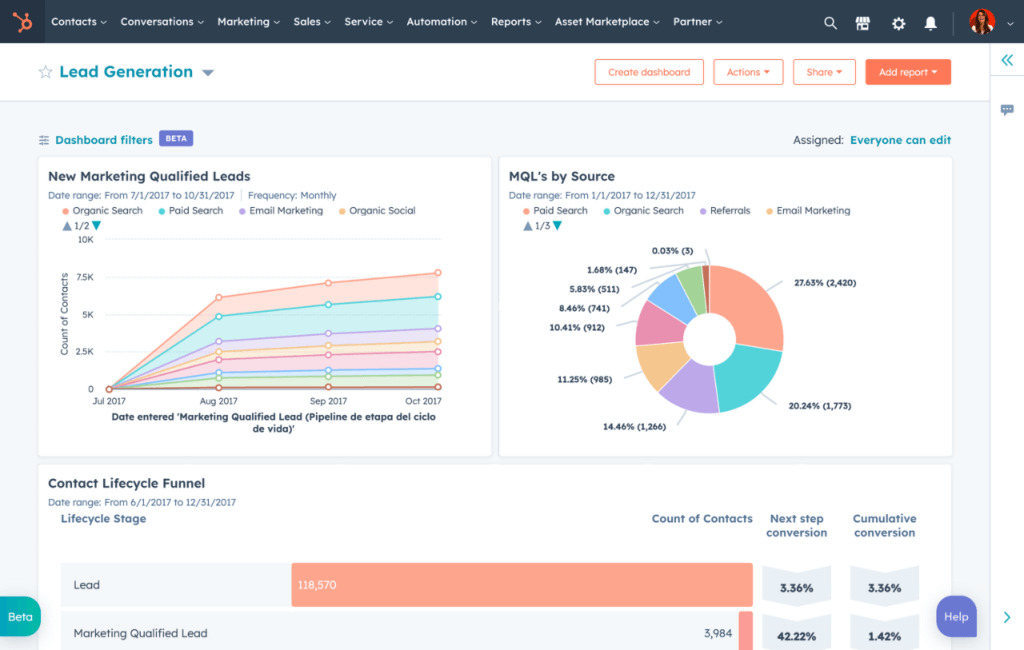
Managing a sales team is a complex job that involves recruiting the right people, motivating them to perform, monitoring performance, and adapting to shifting market conditions. Many sales leaders have similar questions about how to lead their reps, use technology, and build processes that support predictable growth. This Q&A guide addresses these common and critical questions in a structured format, providing practical tips and highlighting tools that can make your job easier.
Introduction: Why a Q&A Format?
As a sales team leader, you often face specific questions: How do you onboard new reps effectively? What metrics should you track? Which tools will help your team succeed? This article uses a question‑and‑answer structure so you can quickly find the information you need. Each section covers a topic that sales leaders frequently wrestle with, from hiring and motivation to pipeline management and technology. By the end, you’ll have actionable insights to elevate your team’s performance and confidence in choosing the right tools-especially a CRM.
What Are the Biggest Challenges When Managing a Sales Team?
Every sales leader faces hurdles. Understanding the most common challenges helps you prepare and respond effectively.
Hiring and Onboarding New Reps
Finding the right talent is costly and time‑consuming. According to the Harvard Business Review, a bad hire can cost up to 30 % of the individual’s first‑year potential earnings. Once you’ve selected the right people, you must teach them about your products, processes, and customers. Investing time in structured onboarding ensures new reps understand your company’s value proposition and how to use your sales tools.
Motivating Sales Team Members
Keeping a team energized in a high‑pressure environment can be challenging. Only about 30 % of employees feel engaged at work. Personalized incentives, clear recognition programs, and a positive culture help maintain enthusiasm. Understanding each rep’s motivators allows you to tailor rewards effectively.
Managing Performance and Coaching
Performance management goes beyond setting targets. You need to track key metrics, provide constructive feedback, and coach reps regularly. Harvard Business Review suggests that 90 % of salespeople aren’t following the correct process. Continuous coaching ensures reps adopt best practices and improves overall team productivity.
Balancing Individual and Team Goals
Reps might focus on personal quotas at the expense of team objectives. A Sales Management Association survey found that more than half of sales organizations lack a clear, consistent strategy for setting goals. Aligning individual targets with team and company goals fosters collaboration and clarity.
Resolving Conflicts and Maintaining Culture
Sales environments are competitive, which can lead to conflict. A CPP, Inc. study notes that 85 % of employees experience some degree of workplace conflict. Addressing issues openly and facilitating mediation helps maintain morale and productivity.
Adapting to Changing Markets
Market trends shift quickly. McKinsey reports that 68 % of businesses invest in digital transformation to stay competitive. Encouraging continuous learning and staying up to date with industry trends ensures your team remains relevant.
How Do You Hire and Onboard the Right Salespeople?
Hiring well and onboarding effectively set the foundation for a high‑performing team.
Defining the Ideal Candidate
Identify the skills and traits that align with your product, market, and company culture. Look for coachability, resilience, and curiosity. Create competency profiles so interviewers know which qualities to evaluate. During interviews, use behavioral questions to assess how candidates handle challenges and collaborate with others.
Structuring an Effective Onboarding Process
A structured onboarding program accelerates ramp‑up and reduces turnover. Combine product training, sales process education, and hands‑on practice. Provide access to recorded calls, playbooks, and your CRM so new reps can practice updating records and logging activities. Assign mentors to answer questions and review progress. Investing in onboarding pays off through shorter ramp times and higher productivity.

How Can You Keep Your Sales Team Motivated?
Motivated reps generate more revenue, stay longer, and elevate team culture.
Design Incentives and Recognition Programs
Offer personalized incentives to match individual motivators. Monetary bonuses work for some, while others prefer public recognition or professional development. Set clear rules and ensure rewards are attainable. Short‑term contests, like awarding the highest outbound calls or, largest deal closed in a month, can energize the team.
Foster Growth and Autonomy
Create career progression plans, offer ongoing training, and provide meaningful feedback. Encourage reps to take ownership of their territories and test new tactics. Autonomy builds trust and drives innovation. For example, if a rep suggests a new messaging approach that resonates with buyers, share the results and roll it out to the team.
Build a Positive Team Culture
Celebrate wins publicly and analyze losses without blame. Encourage collaboration by pairing high performers with newer reps. Hold regular team meetings to share best practices, discuss challenges, and brainstorm solutions. A supportive culture retains talent and keeps morale high.
Which Metrics Should You Monitor for Sales Success?
You can’t manage what you don’t measure. Tracking the right metrics provides clarity and drives informed decisions.
Pipeline Key Performance Indicators (KPIs)
Focus on the KPIs that directly influence revenue:
- Deal volume at each stage: Understand how many opportunities you have in each phase of the sales process.
- Average deal size and sales velocity: Monitor the value and speed of deals moving through the pipeline.
- Stage conversion rates: Identify bottlenecks and refine your approach when prospects stall.
- Close ratio and forecast accuracy: Track the percentage of opportunities that convert to closed deals and compare forecasts against actual results.
Activity Metrics
Measure actions that drive outcomes, such as calls, emails, meetings, and proposals. Use your CRM to log every interaction and analyze which activities correlate with conversions. For instance, if eight touches are needed to close a deal and many reps give up after one contact, coaching them to persist through multiple follow‑ups will improve win rates.
Forecast Accuracy and Sales Velocity
Forecast accuracy measures how close your predictions are to actual results. Sales velocity calculates the revenue generated per unit of time. Improving accuracy helps allocate resources effectively, while increasing velocity shortens sales cycles. Use historical data, pipeline stages, and probability weighting to refine your forecasts.
Quick Metrics Summary
| Metric | What It Measures | Why It Matters |
| Average Deal Size | Average revenue per closed deal | Helps forecast total sales volume |
| Sales Velocity | Speed of deals moving through pipeline | Indicates efficiency of the sales process |
| Conversion Rate | Leads converted to paying customers | Shows effectiveness of sales activities |
| Pipeline Value | Total potential deal amount | Determines revenue opportunities |
| Forecast Accuracy | Predicted vs. actual sales | Improves planning and resource allocation |
How Do You Balance Individual Targets With Team Goals?
Balancing personal and collective objectives prevents internal competition from undermining overall success.
Setting SMART Goals
Use SMART (Specific, Measurable, Achievable, Relevant, Time‑bound) criteria when setting individual and team goals. Share company objectives so reps understand how their targets contribute to broader results. Revisit goals regularly and adjust them when market conditions change.
Implementing Team‑Based Incentives
Tie rewards to both individual performance and team achievements. For example, allocate a portion of bonuses to hitting collective pipeline or revenue targets. This encourages collaboration and ensures everyone is invested in the team’s success. Recognize team achievements publicly to reinforce the value of collaboration.
Encouraging Knowledge Sharing
Create structures for sharing best practices. Weekly meetings, peer coaching and shared resources help reps learn from each other. When a rep closes a complex deal, ask them to present their approach to the team. This fosters a culture where success is celebrated and replicated.

What Are the Best Ways to Resolve Conflicts Within a Sales Team?
Conflicts arise when goals, personalities, or communication styles clash. Address them proactively to maintain productivity.
Promote Open Communication
Encourage reps to voice concerns and ask questions. Establish regular one‑on‑one meetings and open forums where team members can air grievances. When you surface issues early, they’re easier to resolve. Model transparency in your own communications; share challenges and solicit input from the team.
Facilitate Mediation and Conflict Resolution
When a conflict escalates, mediate a conversation between the parties. Listen to each perspective, clarify misunderstandings, and guide them toward a compromise. Consider using role‑playing exercises to help reps empathize with each other’s viewpoints. Document agreements to prevent misunderstandings later.
Foster a Culture of Respect
Establish norms for professional behavior and hold everyone accountable. Recognize positive interactions and challenge unproductive behavior. When conflicts are handled respectfully, they become learning opportunities instead of damaging disruptions.
How Can You Maintain a Healthy Sales Pipeline?
A healthy pipeline is the lifeblood of predictable revenue. The following practices keep your pipeline accurate and focused.
Prioritizing High‑Intent Leads
Not all leads are equal. Define what a sales‑ready lead looks like for your business using data like company size, industry, and engagement. Leverage your CRM to score and filter prospects so your team focuses on opportunities most likely to close. Use automated lead scoring to rank opportunities by fit and intent.
Building a Repeatable Follow‑Up Cadence
Prospects rarely buy after the first contact, yet many reps stop after one touch. Design a follow‑up sequence that includes multiple emails, calls, and social touches. Automate reminders and tasks in your CRM so reps know when to reach out. Consistent follow‑up builds trust and ensures no opportunity slips through the cracks.
Disqualifying Dead Deals and Ensuring Pipeline Hygiene
Clogged pipelines misrepresent your forecast and waste resources. Remove opportunities that show little engagement, no budget, or unclear timelines. Encourage reps to keep notes up to date and review deals regularly. Use automated workflows to flag stalled deals. Keep your pipeline current so you can focus on viable opportunities and accurate forecasting.
Which CRM Tools Can Help Manage Your Sales Team Effectively?
Having the right software makes it easier to track performance, automate tasks, and collaborate. The following tools are among the best for sales team leaders.
monday CRM: The Top Choice for Sales Team Management
monday CRM stands out for its flexibility, user‑friendly interface, and deep customization. Built on the monday Work OS, it lets you create custom boards for pipelines, leads, and accounts. Real‑time dashboards provide insights into activity levels, deal progress, and team performance. Automation rules streamline tasks, such as moving deals to the next stage, assigning follow‑ups, or notifying stakeholders, so nothing falls through the cracks. With monday CRM, you can visualize multiple KPIs, reports, and dashboards at once, giving you an edge in decision‑making. It integrates with popular tools like Slack, Gmail, and Zoom, and its mobile app ensures reps can update records from anywhere.

HubSpot CRM: A Flexible Runner‑Up
HubSpot CRM offers a free entry tier that includes contact management, pipeline tracking, and email integration. It’s ideal for small teams looking to get started quickly. Paid tiers add powerful marketing automation, AI‑powered lead scoring, and detailed analytics. The interface is intuitive, and HubSpot’s Academy provides extensive training resources. However, some advanced features require upgrading to higher‑priced plans.

Pipedrive: Visual Pipeline Management
Pipedrive’s visual drag‑and‑drop pipeline makes it easy to see where every deal stands. It encourages reps to move deals through stages, prompting them to schedule follow‑ups and tasks. Automation features, such as activity reminders and personalized email sequences, help keep deals moving. While Pipedrive excels at pipeline management, it offers fewer marketing and customer service functions than broader platforms.
Quick Comparison
| Feature Type | monday CRM | HubSpot CRM | Pipedrive |
| Ease of Use | Very intuitive drag-and-drop interface | User-friendly but with more setup steps | Simplified navigation, beginner-friendly |
| Automation | Custom automation rules included | Powerful workflows in paid tiers | Smart activity reminders and deal updates |
| AI Capabilities | monday AI assists with forecasting and tasks | AI-powered deal insights | Basic AI suggestions for follow-ups |
| Integrations | Slack, Zoom, Gmail, QuickBooks | Extensive app marketplace | Native integrations with Google Workspace |
| Best For | Mid to large teams needing flexibility | Growing businesses and marketers | Small to medium sales teams |
How Does Technology Streamline Sales Team Management?
Digital tools empower sales leaders to make data‑driven decisions, automate administrative work, and stay connected with their teams.
Real‑Time Performance Monitoring
Modern CRMs provide dashboards and reports that update immediately. With monday CRM, you can quickly see whether activity levels are high enough and which reps need help closing deals. Real‑time analytics reduce guesswork and allow you to coach reps based on current performance.
Automation of Tasks and Workflows
Automating repetitive tasks frees reps to focus on selling. CRMs can assign leads, send follow‑up reminders, and update deal stages automatically. For example, if a deal’s status changes to “won,” monday CRM moves it to the onboarding board and assigns the appropriate team member. Automation reduces manual errors and ensures consistency across the sales process.
Centralized Communication and Data
A CRM serves as a single source of truth for all customer interactions. Reps can see call notes, emails, and meeting outcomes in one place, making it easier to provide context when handing off clients or collaborating with marketing. monday CRM’s centralized hub allows managers to access updates quickly and provide senior leadership with real‑time status reports.
Integration With Other Tools
CRMs integrate with your broader tech stack, from email platforms to accounting software. Integration eliminates duplicate data entry and provides a holistic view of customer interactions. monday CRM offers integrations with apps like Slack, Zoom, Gmail and QuickBooks. HubSpot and Pipedrive also support multiple integrations, either natively or via marketplaces.

How Do You Stay Ahead of Market Trends and Continuously Improve?
Sales leaders must adapt to changing buyer behaviors and technology developments.
Encourage Continuous Learning
Support professional development by sponsoring attendance at industry conferences, webinars, and online courses. Encourage reps to follow thought leaders, read industry blogs, and participate in communities. Regular learning keeps your team updated on best practices and new approaches.
Use Data and Analytics for Iteration
Regularly analyze your sales process to find friction points. Monitor conversion rates, stage duration, and lead sources. A/B test messaging, cadences, and demo formats. Use your CRM’s reporting tools to identify trends and optimize your approach. A data‑driven mindset enables you to adapt quickly when results change.
Stay Informed on Technology Trends
Subscribe to newsletters, follow software updates, and monitor emerging technologies like AI and predictive analytics. Tools are evolving rapidly; staying informed helps you decide when to adopt new capabilities that can improve efficiency or give you a competitive edge.
FAQs: Quick Answers for Sales Team Leads
1. How can I shorten my sales cycle without rushing buyers?
Focus on high‑intent leads, automate routine tasks, and remove bottlenecks. Provide value in every interaction, and use your CRM to track engagement so you know when to follow up or pause.
2. What should I look for in a sales rep besides experience?
Look for coachability, resilience, problem‑solving skills, and cultural fit. During interviews, ask candidates how they handled past challenges and adapted to change.
3. How often should I hold one‑on‑one meetings with reps?
Weekly one‑on‑ones are ideal. Use this time to review metrics, discuss challenges, and provide coaching. Frequent meetings build trust and allow you to address issues before they become problems.
4. How do I handle a rep who consistently misses quota?
Review their pipeline data and activity levels. Identify skill gaps and provide targeted coaching. If performance doesn’t improve, consider whether the role is a good fit.
5. Are cold calls still effective in 2025?
Cold calling can work when combined with research and personalization. Use your CRM to segment and prioritize leads, craft tailored messages, and track call outcomes.
6. How many stages should my sales pipeline have?
It depends on your sales process, but most pipelines include five to seven stages (e.g., lead, qualified, proposal, negotiation, closed–won or lost). The key is to clearly define actions required at each stage.
7. What’s the best way to coach underperforming reps?
Use data to pinpoint areas for improvement, such as low activity, poor conversion at a specific stage, or ineffective messaging. Role‑play scenarios, provide feedback, and celebrate incremental progress.
8. When should I invest in a paid CRM if I’m using a free version?
Upgrade when you need more automation, reporting, or user seats. Paid plans typically provide advanced features like custom dashboards, predictive analytics, and priority support that accelerate growth.
9. How do I ensure reps use the CRM consistently?
Make CRM usage part of your process by tracking activity in dashboards and tying updates to compensation. Provide training, set expectations, and show reps how the CRM helps them close more deals.
10. Can technology replace human coaching?
Technology enhances coaching by providing data and automating routine tasks, but it cannot replace human insight. Effective coaching combines analytics with empathy and situational awareness.
Internal Resources and Further Reading
- Guide to Choosing the Best CRM for Sales Teams – A detailed comparison of leading CRM platforms with, focus on sales features.
- How to Build a High‑Performing Sales Pipeline – Step‑by‑step instructions for designing and optimizing your pipeline.
- CRM Sales Forecasting Explained – Learn how to use CRM data to predict revenue accurately.
- CRM SaaS Tools Guide – Explore the advantages of cloud‑based CRM and compare top providers.
Conclusion: Empower Your Sales Team With the Right Processes and Tools
Effective sales team management requires a blend of strategy, people skills, and technology. By addressing the key questions posed in this guide, you’re better equipped to hire and onboard the right reps, motivate and coach them, maintain a healthy pipeline, and leverage technology to streamline operations. A modern CRM, especially monday CRM, plays a pivotal role in supporting these efforts by providing real‑time insights, automation, and collaboration features. Continue learning, stay adaptable, and use data to refine your processes. With the right mindset and tools, you can lead your sales team to consistent, scalable success.






